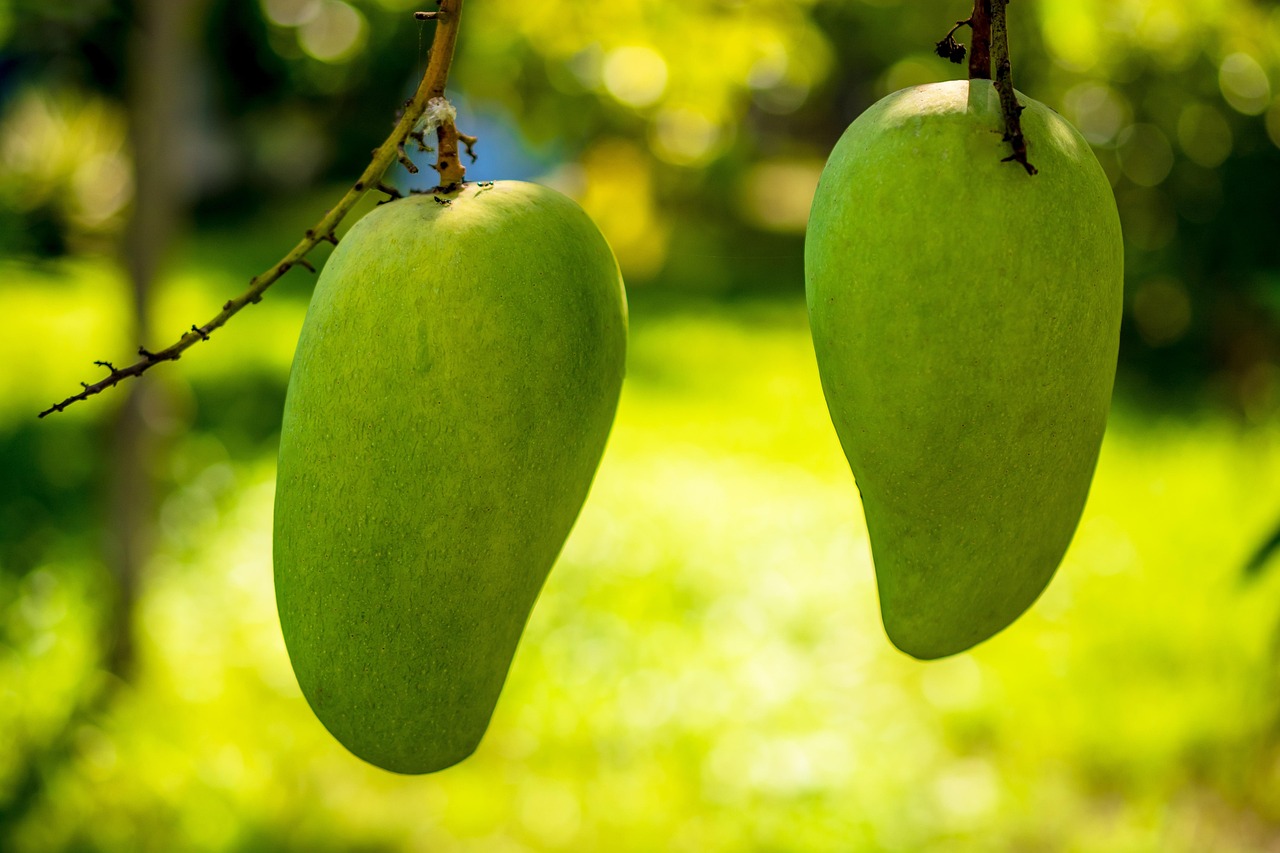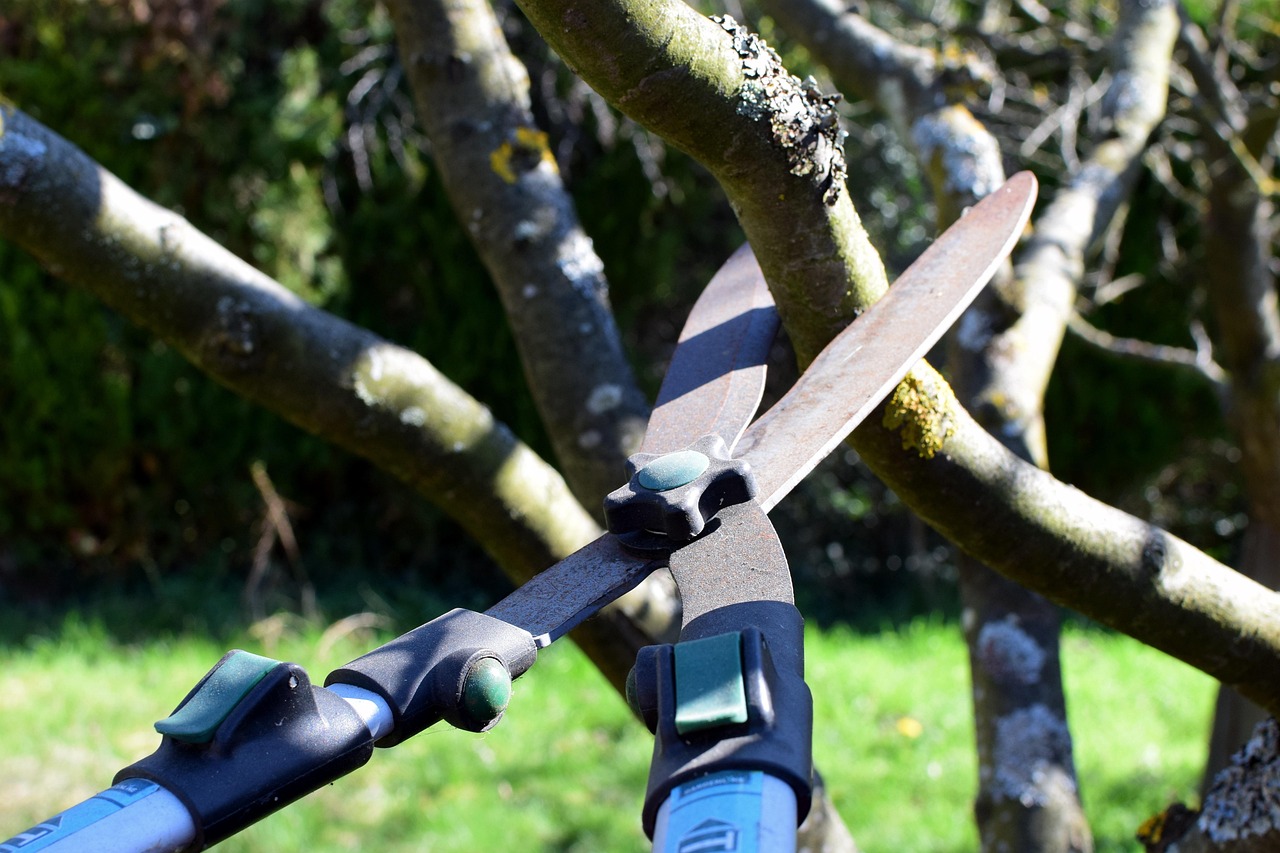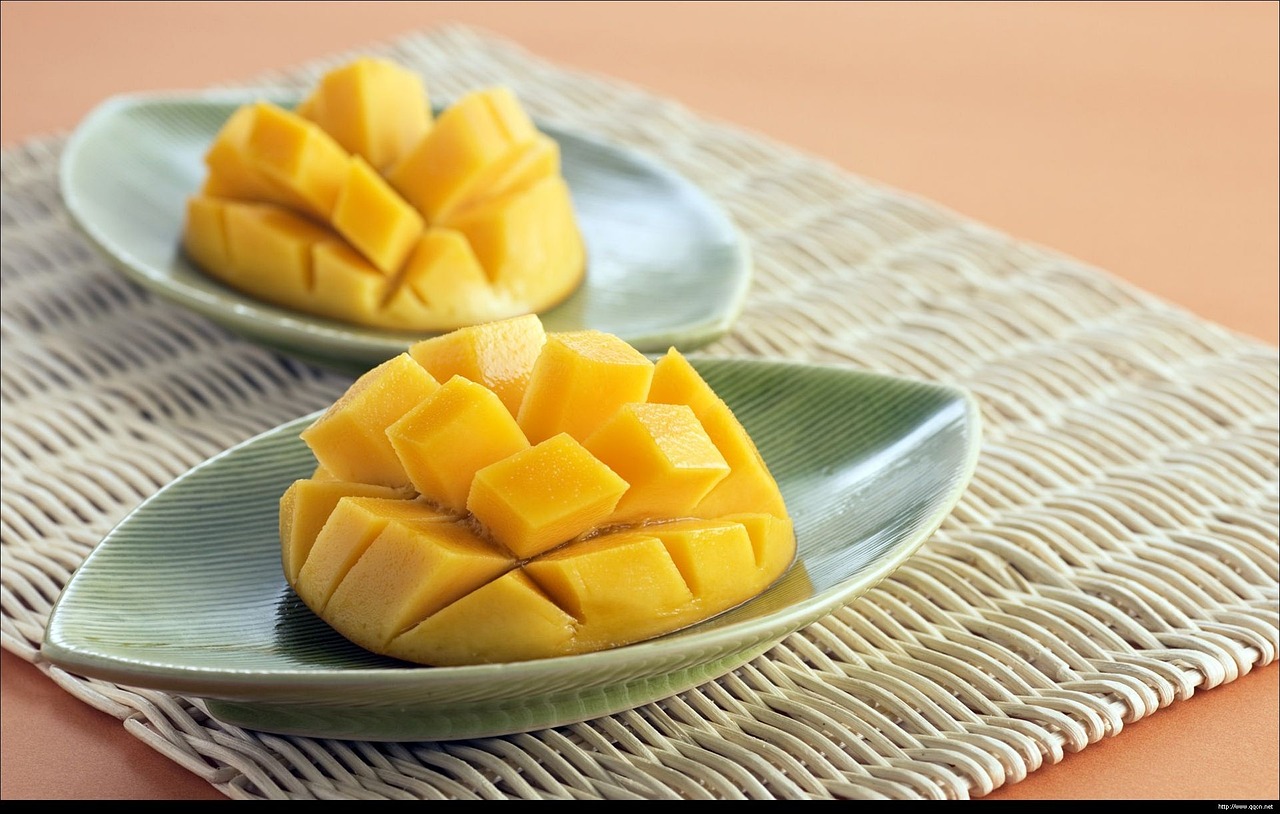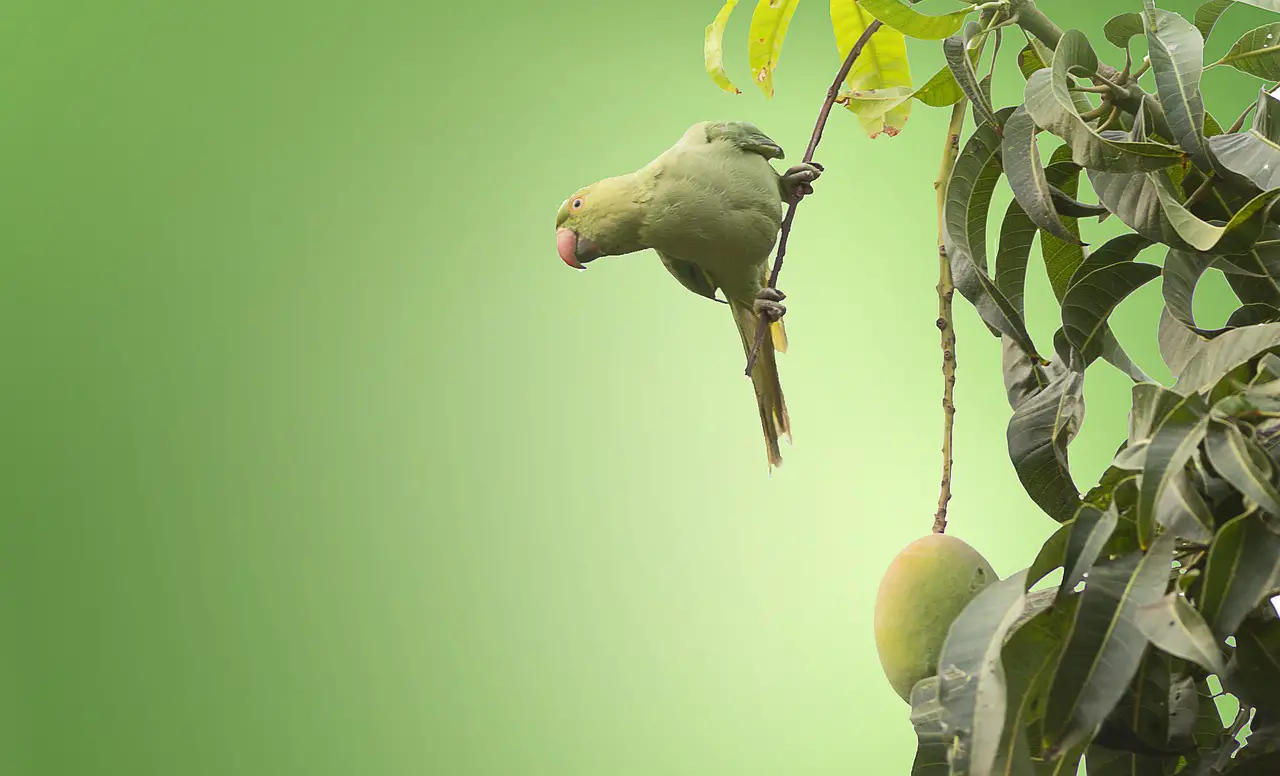Mango tree pruning is essential for maintaining healthy growth, improving fruit production, and managing tree size in tropical landscapes. Proper techniques enhance air circulation and sunlight exposure, contributing to better fruit quality and yield.
Mango trees (Mangifera indica) are cherished in tropical regions for their delicious fruit and lush foliage. However, without proper care, these trees can become overgrown, leading to reduced fruit quality and increased vulnerability to pests and diseases. Pruning is a critical practice that helps maintain the health and productivity of mango trees. It involves removing specific branches and leaves to promote better growth, improve air circulation, and enhance light penetration.

Understanding the appropriate timing and techniques for pruning is vital for achieving optimal results. In tropical climates, the best time to prune mango trees is during the dry season when the risk of disease is lower. This period allows the tree to heal faster after cuts. The main objectives of pruning include controlling tree height, shaping the canopy, removing dead or diseased branches, and encouraging new growth.
Benefits of Pruning Mango Trees
Pruning mango trees offers several benefits that contribute to overall tree health and fruit production. Here are some key advantages:
- Improved Air Circulation: Pruning enhances airflow through the tree’s canopy, reducing humidity and preventing fungal diseases.
- Better Sunlight Exposure: Removing excess branches allows more sunlight to reach the inner parts of the tree, promoting photosynthesis.
- Higher Fruit Quality: Well-pruned trees typically produce larger, healthier fruits due to better nutrient distribution.
- Easier Harvesting: A manageable tree size makes it easier for gardeners to access fruits during harvest.
- Encouraging New Growth: Pruning stimulates new shoots, which can lead to increased fruit production in subsequent seasons.
Each benefit plays a crucial role in ensuring that mango trees remain productive and healthy throughout their lifespan. However, improper pruning can have adverse effects. Therefore, it is essential to follow best practices for pruning mango trees.

When to Prune Mango Trees
The timing of pruning is significant. In tropical regions, it is generally recommended to prune mango trees during the dry season. This timing minimizes the risk of fungal infections and other diseases that thrive in humid conditions. The ideal months for pruning may vary depending on local climate conditions, but it often falls between late winter and early spring.
It is also crucial to avoid pruning during the fruit-bearing season. Cutting branches while the tree is producing fruit can lead to stress on the tree and reduce yield. Additionally, pruning after harvest can help prepare the tree for the next growing season.
Tools Needed for Pruning
Having the right tools can make a significant difference in how effectively you prune your mango trees. Here are some essential tools for the job:

| Tool | Use |
|---|---|
| Hand Pruners | Ideal for cutting small branches and stems. |
| Loppers | Useful for cutting thicker branches that are difficult to reach. |
| Saw | Necessary for larger branches that require more power. |
| Gloves | Protects hands while working with sharp tools and thorny branches. |
| Pole Pruner | Helps reach high branches without the need for a ladder. |
Using the right tools ensures clean cuts, which helps prevent damage to the tree. Always make sure tools are sharp and disinfected before use to reduce the risk of spreading diseases between plants.
Pruning Techniques
There are different techniques to employ when pruning mango trees. Each technique serves a specific purpose, contributing to overall tree health and productivity:
- Thinning: This technique involves selectively removing branches to improve airflow and light penetration within the canopy.
- Heading Back: Cutting back longer branches encourages bushier growth and helps maintain a desired size.
- Crown Reduction: This technique reduces the height of the tree while maintaining its overall shape. It prevents excessive height that makes harvesting difficult.
Applying these techniques correctly ensures that the mango tree remains healthy and productive. Each cut should be made carefully to avoid harming the tree’s structure.

Understanding these fundamentals will prepare you for effective pruning practices that enhance the health and yield of your mango trees in tropical landscapes. As you continue reading, more in-depth techniques and specific steps will be discussed to refine your pruning skills further.
Step-by-Step Pruning Process
To effectively prune your mango trees, it is essential to follow a systematic approach. Here is a step-by-step guide to help you through the pruning process:
- Assess the Tree: Begin by examining the overall health of the tree. Look for signs of disease, dead branches, and areas where light is not penetrating.
- Gather Tools: Ensure you have all necessary tools ready. This includes hand pruners, loppers, a saw, gloves, and disinfectant for tools.
- Start with Dead or Diseased Branches: Remove any branches that are dead, diseased, or damaged first. This helps to improve overall tree health.
- Thin Out the Canopy: Identify branches that are overcrowded or crossing each other. Selectively remove these branches to improve airflow and light penetration.
- Shape the Tree: Use heading back and crown reduction techniques to shape the tree as desired. Focus on maintaining a balanced structure.
- Clean Up: After pruning, clean up the area around the tree. Dispose of any cut branches properly to avoid attracting pests.
Taking the time to follow these steps will ensure that your mango tree receives the best care during the pruning process.
Common Mistakes to Avoid
While pruning is beneficial, several common mistakes can hinder the health of your mango trees. Being aware of these pitfalls can help you avoid them:
- Pruning at the Wrong Time: Avoid pruning during the fruiting season or when the tree is under stress from drought or disease.
- Over-Pruning: Removing too many branches can shock the tree and reduce fruit production. Aim for a balanced approach.
- Using Dull Tools: Dull tools can cause ragged cuts that are prone to disease. Always ensure your tools are sharp and well-maintained.
- Ignoring Safety Precautions: Always wear gloves and eye protection when pruning. Be cautious when using ladders or climbing.
- Poor Cuts: Make clean cuts at a slight angle to promote healing. Avoid leaving stubs, which can become entry points for diseases.
Avoiding these mistakes will help ensure that your mango trees thrive and produce abundant fruit.
Specific Pruning Techniques for Mango Trees
In addition to the general pruning techniques mentioned earlier, there are specific methods that can be particularly beneficial for mango trees:
Pinching
Pinching is a technique that involves removing the tips of young shoots. This encourages branching and bushier growth. It is particularly effective when done early in the growing season.
Crown Lifting
Crown lifting involves removing lower branches to raise the canopy height. This technique improves airflow and makes harvesting easier. It is essential for ensuring that fruits receive adequate sunlight.
Restorative Pruning
If a mango tree has become excessively overgrown or damaged, restorative pruning may be necessary. This involves significant cutting back of branches to rejuvenate the tree. It is crucial to do this gradually over a few seasons to minimize stress on the tree.
Post-Pruning Care
After pruning, providing proper care is vital for helping your mango tree recover and thrive. Here are some essential post-pruning care tips:
- Watering: Ensure the tree receives adequate water after pruning. This helps support new growth and recovery.
- Fertilizing: Apply a balanced fertilizer a few weeks after pruning to encourage healthy growth and fruit production.
- Pest Monitoring: Keep an eye out for pests and diseases. Pruned trees can be more vulnerable, so regular monitoring is crucial.
- Mulching: Adding mulch around the base of the tree helps retain moisture and suppress weeds.
Caring for your mango tree after pruning ensures that it will recover quickly and continue to produce healthy fruit for years to come.
Understanding Mango Tree Growth Patterns
Mango trees have unique growth patterns that influence how and when to prune them effectively. Understanding these patterns can significantly enhance your pruning strategy:
- Growth Habit: Mango trees typically have a wide-spreading habit with a dense canopy. This necessitates regular thinning to prevent overcrowding.
- Shoot Development: Mango trees produce new shoots in flushes during warm weather. Pruning should align with these growth patterns to maximize new growth.
- Fruit Production Cycles: Mango trees have biennial bearing habits, meaning they may produce heavy crops one year followed by lighter crops the next. Pruning can help balance production across years.
By understanding these growth patterns, you can tailor your pruning practices to optimize the health and productivity of your mango trees in tropical landscapes.
Identifying the Right Pruning Cuts
Making the correct cuts is crucial when pruning mango trees. Different types of cuts serve various purposes and can significantly impact the tree’s health and growth. Here are the primary types of pruning cuts you should be familiar with:
- Heading Cuts: These cuts are made to shorten a branch, encouraging bushier growth. Heading cuts stimulate new shoots to grow from the remaining buds.
- Thinning Cuts: These cuts involve removing an entire branch back to its origin. Thinning opens up the canopy, allowing light and air to circulate, which is beneficial for the overall tree health.
- Reduction Cuts: Reduction cuts shorten branches without removing them entirely. This technique is useful for maintaining tree height and shaping without compromising the structure.
- Pinching: This involves removing the tips of young shoots. It encourages branching at lower levels and helps control the tree’s growth habit.
Understanding when to use each type of cut will enhance your pruning effectiveness. Proper cuts promote healthy growth and can lead to increased fruit production.
Pruning for Pest and Disease Management
Effective pruning plays a significant role in managing pests and diseases in mango trees. Regularly removing dead or diseased branches can help prevent infestations and infections. Here are ways in which pruning contributes to pest and disease management:
- Improved Airflow: Thinning out crowded branches improves air circulation, reducing humidity within the canopy, which minimizes fungal diseases.
- Removal of Infected Material: Pruning allows for the removal of branches that show signs of disease, preventing the spread to healthy areas.
- Easier Monitoring: A well-pruned tree is easier to inspect for pests and diseases, enabling proactive management.
By incorporating pest and disease management into your pruning strategy, you help ensure the long-term health of your mango trees.
Seasonal Considerations for Pruning
The seasons play a vital role in determining how and when to prune mango trees. Each season offers unique opportunities and challenges:
Spring
Spring is often ideal for pruning mango trees as they begin their active growth phase. This is when flushes of new growth occur, making it an excellent time to shape the tree and encourage healthy branching.
Summer
During summer, pruning should be minimal as the tree is actively growing. However, light maintenance pruning can be done to remove any unwanted or overcrowded growth.
Fall
In fall, as the growing season winds down, it is wise to assess the tree’s structure. Prepare for more extensive pruning during the dry season, focusing on any dead or diseased branches.
winter
Winter is typically not the best time for pruning mango trees in tropical climates. Trees are usually dormant, and cutting during this time can stress the tree. However, if necessary, you can remove any damaged branches or prepare tools for upcoming spring pruning.
Understanding Tree Structure
To prune effectively, understanding the structure of mango trees is essential. Mango trees have a unique architecture that includes several key components:
- Main Leader: The central trunk that supports all other branches. Maintaining a strong leader is crucial for stability.
- Lateral Branches: The secondary branches that extend from the main leader. These should be evenly spaced to provide balance.
- Canopy: The upper portion of the tree formed by leaves and branches. A well-structured canopy allows for optimal sunlight exposure.
- Roots: While not visible, understanding root health is crucial as it supports the entire tree structure. Pruning should not disturb root integrity.
When pruning, focus on enhancing the natural structure of the tree rather than forcing it into an unnatural shape. This approach fosters healthier growth and more abundant fruit production.
The Role of Fertilization After Pruning
Fertilization is a crucial aspect of post-pruning care. After making cuts, providing adequate nutrients helps support recovery and encourages new growth. Here are some guidelines for fertilizing your mango trees after pruning:
- Select a Balanced Fertilizer: Use a balanced fertilizer with equal parts nitrogen, phosphorus, and potassium to support overall health.
- Timing: Apply fertilizer about four to six weeks after pruning. This timing allows the tree to recover from pruning before adding nutrients.
- Avoid Over-Fertilizing: Too much fertilizer can lead to excessive growth at the expense of fruit production. Always follow recommended application rates.
- Watering After Fertilization: Ensure you water the tree well after applying fertilizer to help nutrients penetrate the soil.
By following these fertilization guidelines, you can promote healthy regrowth in your mango trees after pruning activities.
Long-Term Pruning Strategy
A long-term approach to pruning mango trees is essential for maintaining a healthy and productive orchard. Here are some strategies to consider:
- Create a Pruning Schedule: Establish a regular schedule for inspecting and pruning your mango trees based on their growth habits and seasonal changes.
- Diversify Pruning Techniques: Use a mix of thinning, heading back, and reduction cuts over time to promote a healthy structure and balance production.
- Record Keeping: Keep detailed records of when and how you prune each tree. This information can help inform future practices.
- Stay Educated: Continuously learn about new techniques and best practices for mango tree care through workshops and gardening resources.
A long-term strategy ensures that your mango trees will remain healthy, productive, and beautiful for many years to come.
Advanced Techniques for Pruning Mango Trees
In addition to the foundational pruning strategies, advanced techniques can further enhance the health and productivity of mango trees. These methods require a deeper understanding of tree biology and growth patterns:
Canopy Management
Canopy management focuses on maintaining a balance between light exposure and leaf density. It ensures that all parts of the tree receive adequate sunlight, which is essential for fruit production. Here are some techniques to consider:
- Selective Thinning: Instead of removing entire branches, selectively thin out excess leaves and smaller branches to open up the canopy while preserving the tree’s structure.
- Layered Pruning: Encourage a layered structure in the tree by selectively pruning higher branches to allow lower branches to thrive without overshadowing them.
Training Young Trees
Training young mango trees through pruning can shape their growth and improve their structure from an early age. This approach often leads to healthier trees that produce more fruit:
- Central Leader Training: Focus on establishing a strong central leader by selectively removing competing branches. This promotes a straight trunk and balanced growth.
- Open Center Training: For trees that spread wide, encourage an open center by removing inward-growing branches. This helps create an airy structure that supports airflow.
Timing and Seasonal Adjustments
Adjusting pruning practices based on seasonal conditions can yield better results. For instance, if a particularly heavy rainfall season is anticipated, consider delaying significant pruning until after the season. This allows the tree to maintain its natural defenses against strong winds and flooding.
Environmental Considerations
Environmental factors influence both the growth of mango trees and the success of your pruning efforts. Understanding these factors can help you make informed decisions:
- Soil Quality: Healthy soil with good drainage is crucial for mango trees. Conduct soil tests to determine pH levels and nutrient content. Adjustments may be necessary before or after pruning.
- Climate Variability: Be aware of local climate conditions, such as humidity and temperature variations, as these can affect both tree health and disease prevalence.
Implementing pruning strategies that consider environmental factors can lead to stronger trees and better fruit yields.
The Importance of Community Knowledge
Engaging with local gardening communities can provide valuable insights into effective mango tree care. Sharing experiences and techniques with fellow gardeners can enhance your understanding and success:
- Participate in Workshops: Look for local gardening workshops focusing on tropical fruit trees. Learning from experts can improve your skills.
- Join Online Forums: Online platforms provide opportunities to connect with other mango tree growers. Sharing challenges and successes can lead to new ideas.
- Local Gardening Clubs: Joining clubs can facilitate networking with experienced growers who can offer personalized advice based on local conditions.
Final Thoughts
Pruning mango trees is an art that combines knowledge, technique, and experience. By understanding the growth patterns, utilizing appropriate cutting techniques, and implementing a long-term care strategy, you can ensure that your mango trees remain healthy and productive for years to come. Observing seasonal changes and adapting your pruning practices accordingly will also enhance the effectiveness of your efforts.
The journey of cultivating mango trees requires patience and commitment. As you apply the principles outlined in this guide, you will not only improve the health of your trees but also enjoy the rewarding experience of harvesting delicious mangoes from your own garden. Remember to continue learning from both successful practices and challenges you encounter along the way.
Your dedication to proper pruning will foster lush, fruitful mango trees that beautify your landscape while providing bountiful harvests. With time, your efforts will yield not just fruit but a deeper understanding of these magnificent trees.
